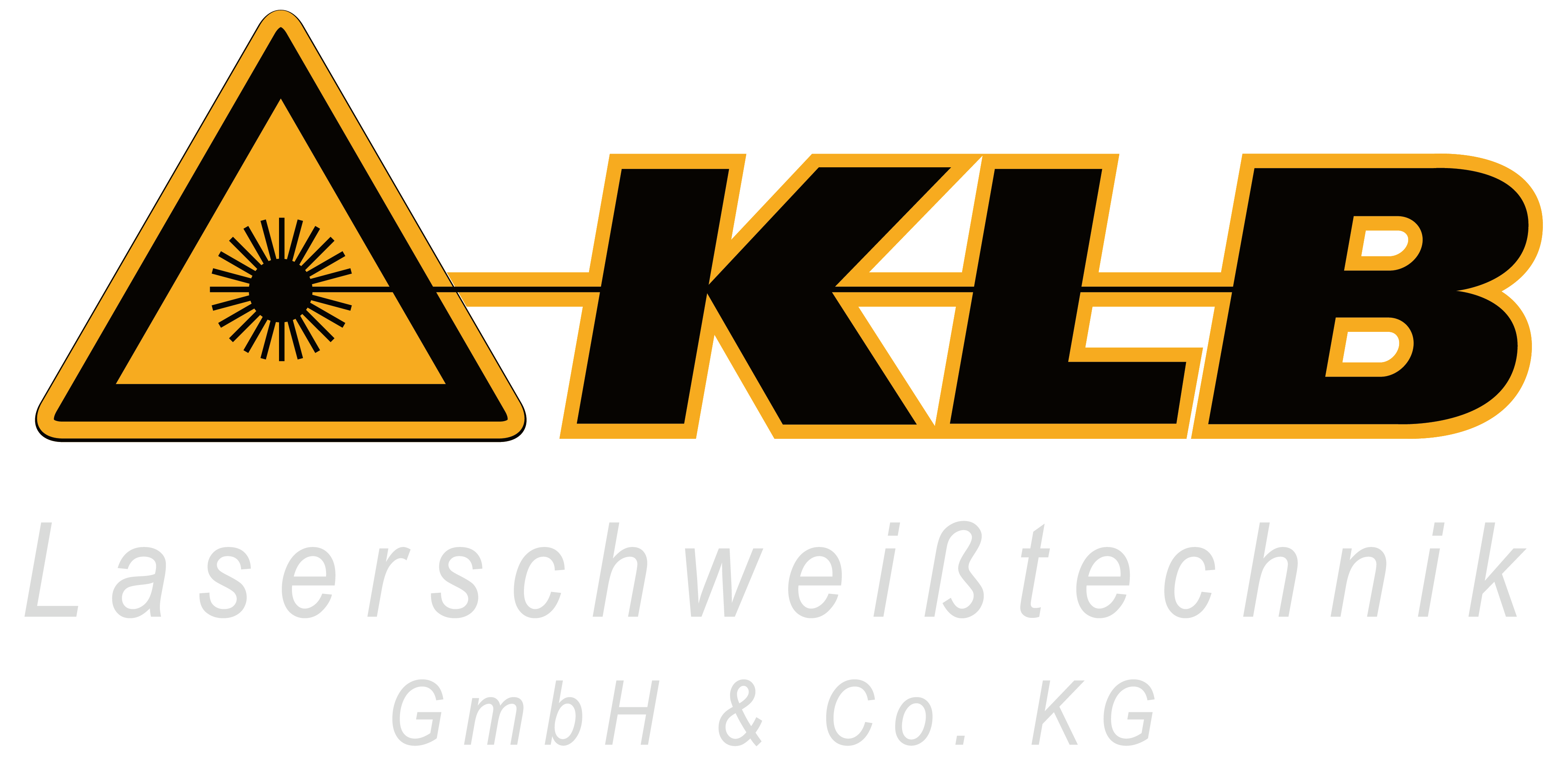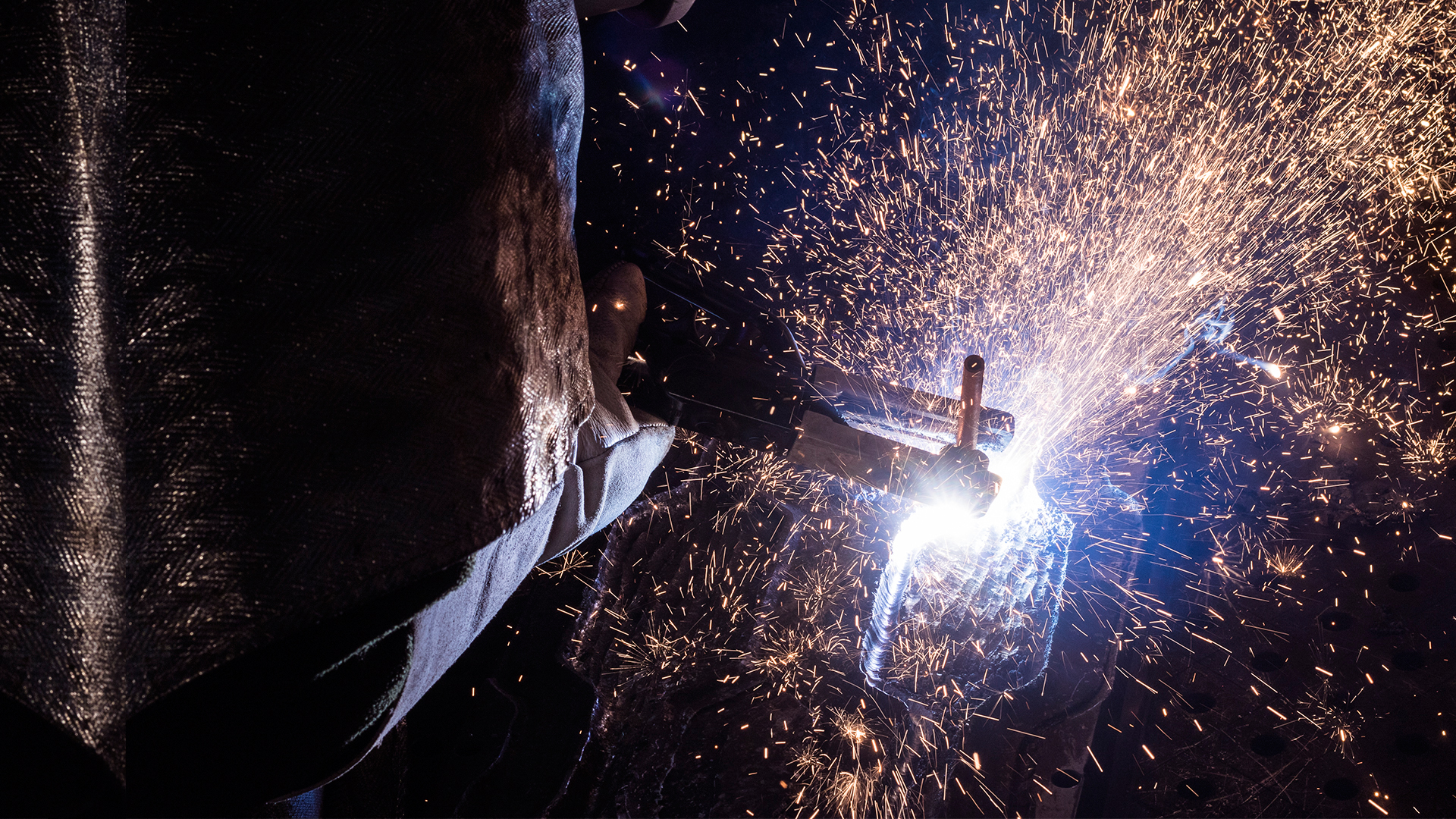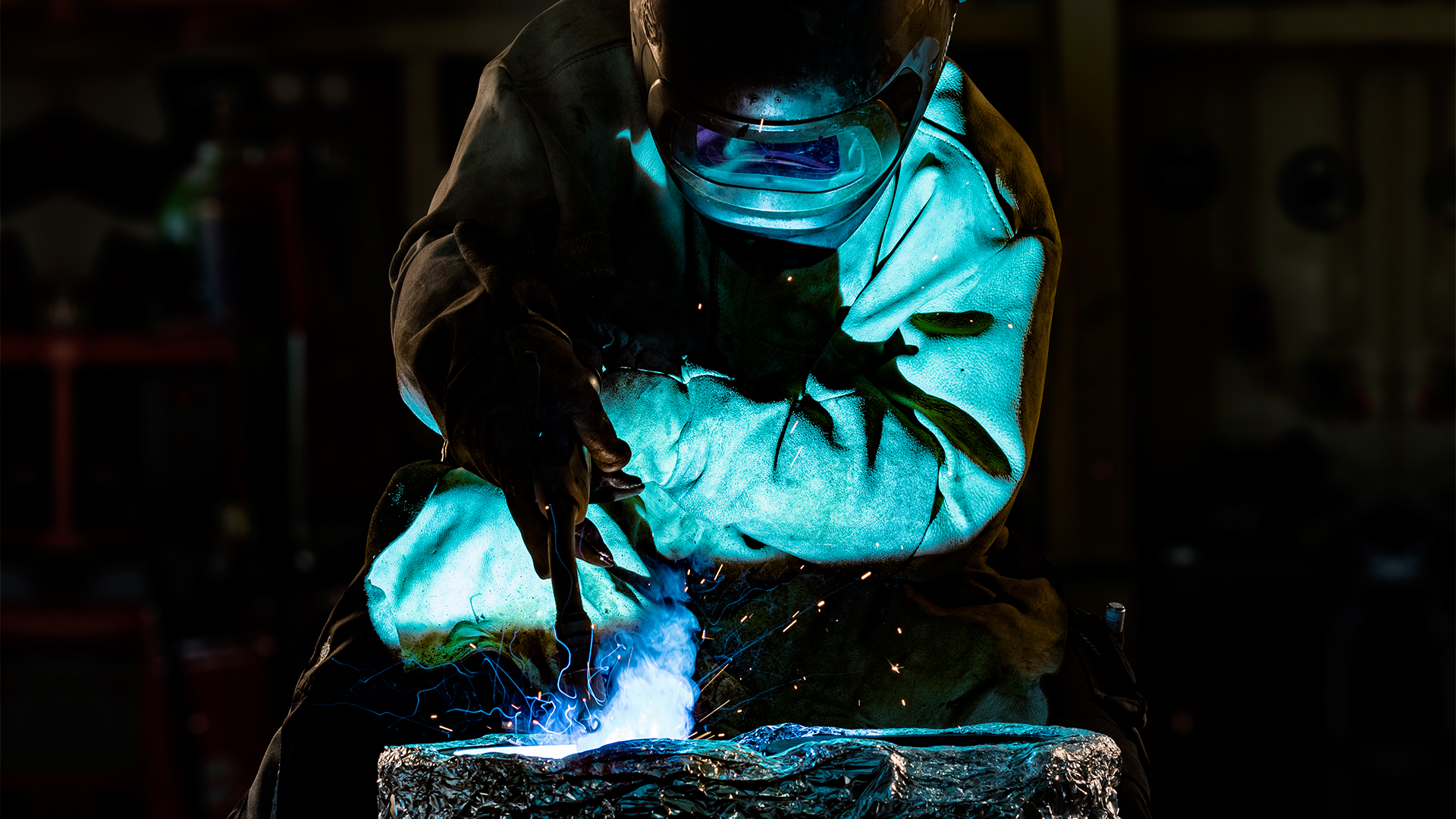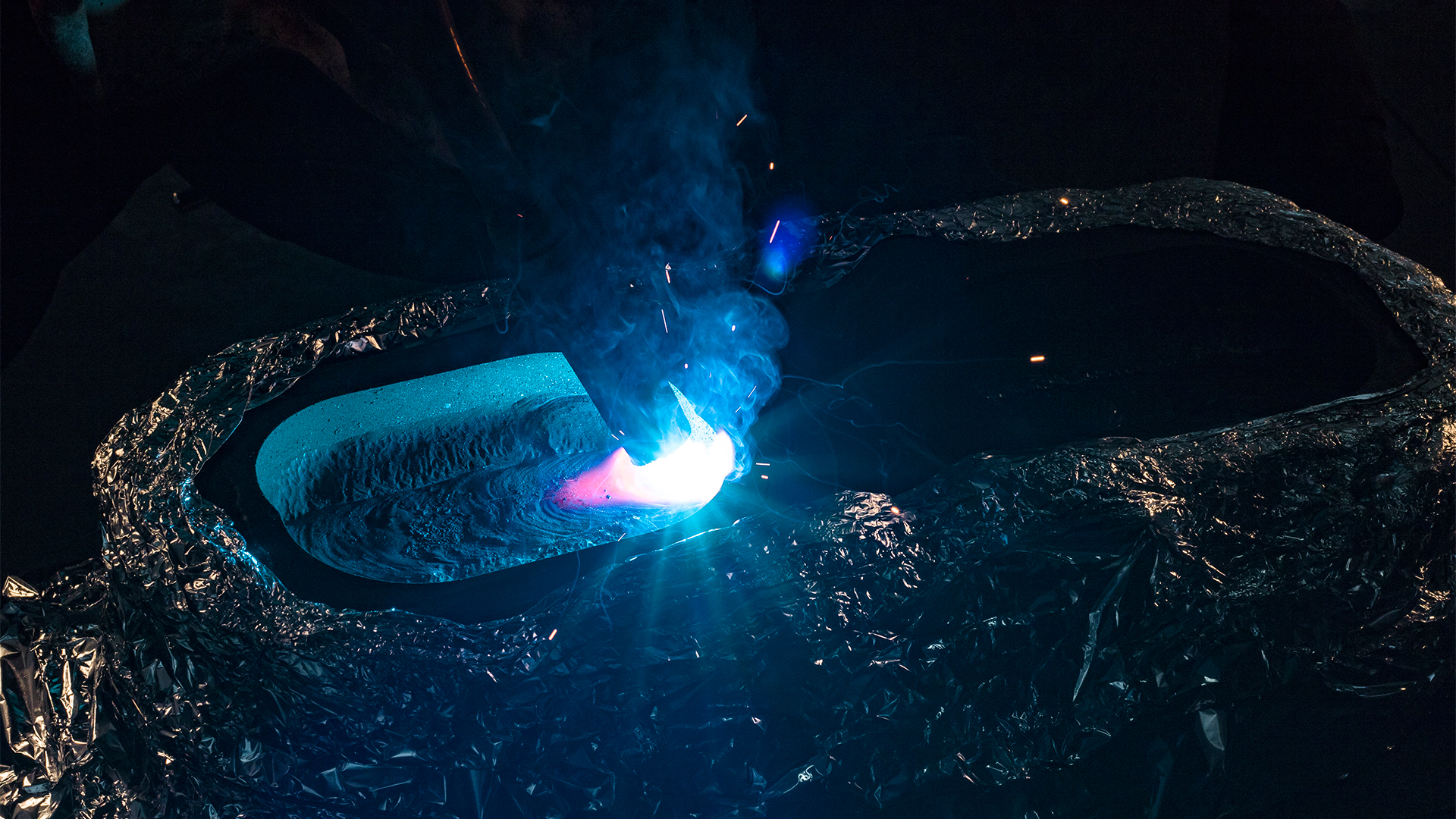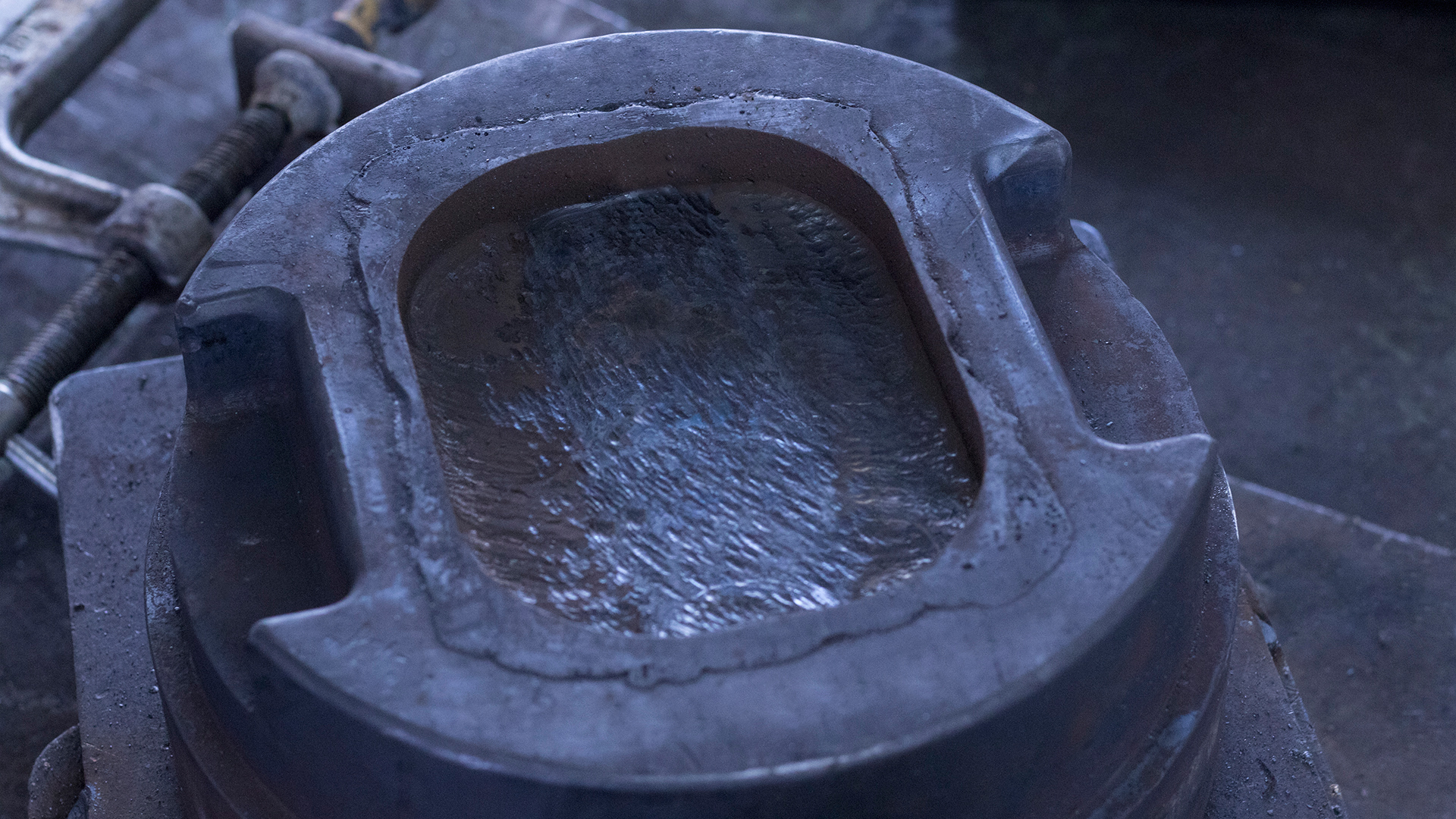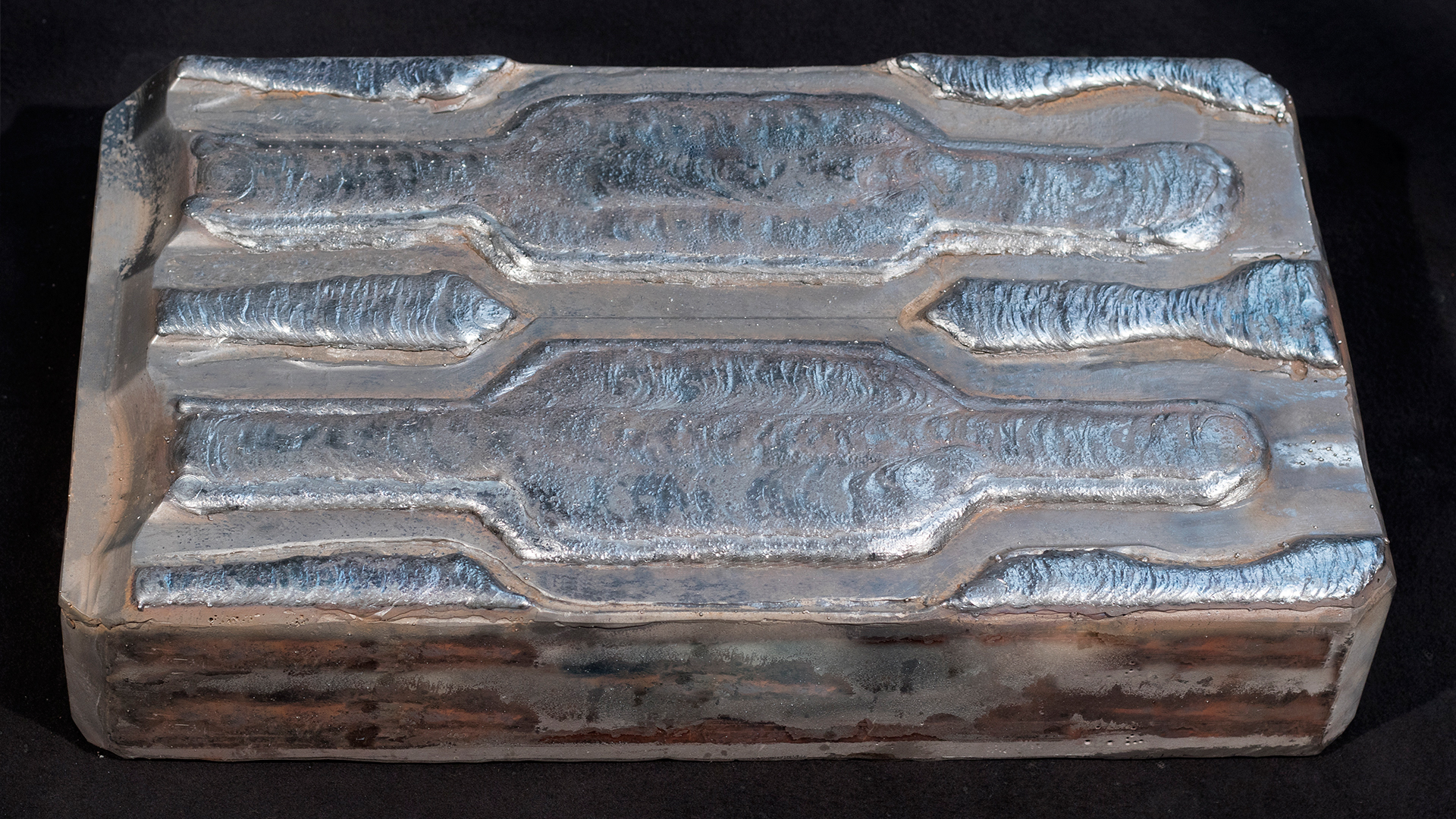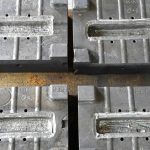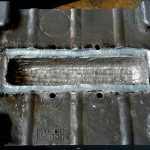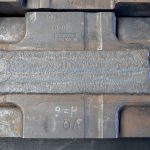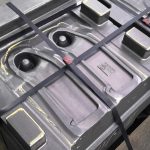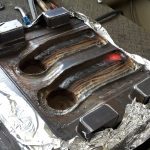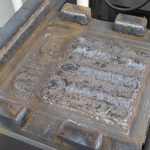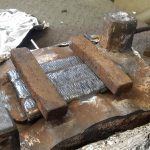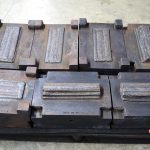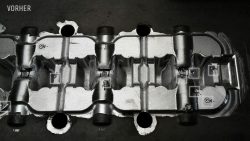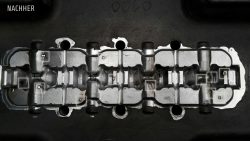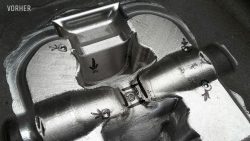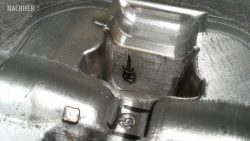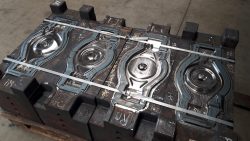Gouging and Flood Welding
Cost Saving Regeneration of your Tools.
Gouging combined with flood welding is a convenient method for restoration of broken stamping and forming tools or forging dies. The necessity may arise in the case of damage, wear, incorrect processing or change of shape. For gouging, a carbon electrode is used to create an arc on the surface, just in order to melt its upper layer. The melt afterwards is blown off by compressed air. This way the defective material zone is removed in a targeted manner – stepwise, layer by layer.
The next step is flood welding, consisting in application of special alloys to the surface. Depending on the need and the stress expected to act on the item, high-temperature strength and wear protection this way can be considerably increased, thus extending the lifetime of the tool. The effect is not negligible, since lower frequency of tool exchange and improved forming properties contribute to considerable cost saving. Repeated regeneration conserves the item – in the longer term, no new tools are required.
Gouging with subsequent flood welding is a well-known method in forging technology for repair of dies, in the case of wear, damage, incorrect processing or modification of existing engraving.
For heat treatment, 14 chamber furnaces with different capacities are at our disposition.
Advantages of gouging and flood welding:
- Increased high-temperature strength and wear protection
- Extended lifetime and improved forging behavior
- Cost and time saving by properly conserved dies
Everything from a single source!
Upon request, tools after completion of flood welding can be finish-milled immediately by our qualified subcontractors so that the desired contour is reestablished.
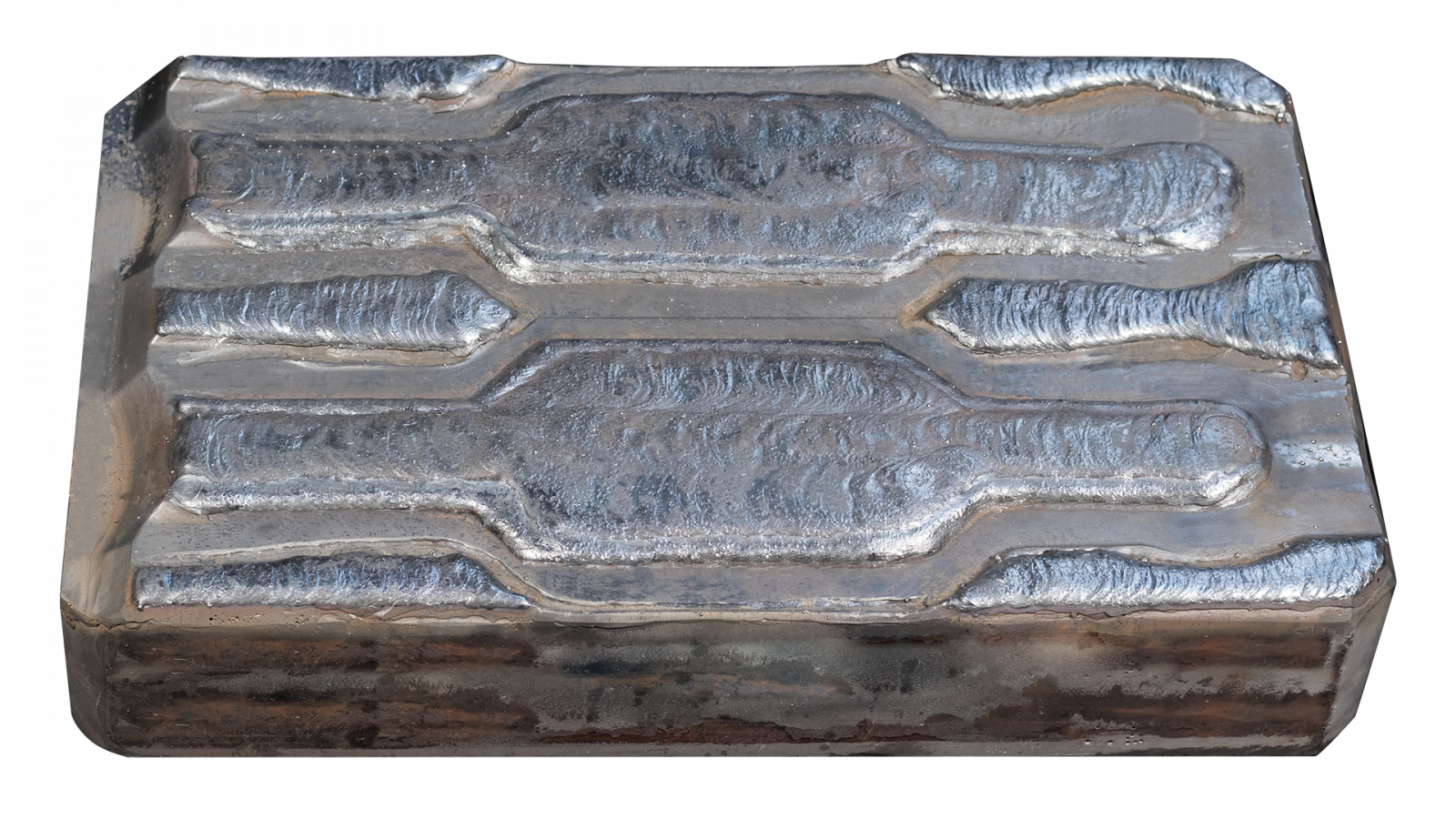
A small selection of objects treated by gouging and flood welding:
6 Chamber Furnaces
The right furnace for your tool.
6 chamber furnaces with different volumes (chambers between 50l bis 1000l are available) are used in our factory, to preheat tools and components to the required working temperature before welding and to perform annealing after completion. For your orders, the corresponding furnace will be selected.
Maximum component size: 1650mm x 1000mm x 610mm
Forging Meets Precision Technology.
Die Construction
Worn forging contours are often restored and thus regenerated by gouging and flood welding, by applying special alloys. A drawback is the sudden occurrence of pores within the weld metal during a following CNC milling operation. As this usually arises at positions hard to reach, rewelding by means of conventional methods turns out to be impossible.
To solve this problem, we use the laser beam which closes the pores without leaving undercuts, and without damaging adjacent areas. Subsequent rework is normally carried out manually, since quantity of material added to the surface in a laser welding procedure is very low, and can be easily ground down by hand.
The perfect technology for saving time and money – for sure!
Laser Hardening of Forging Dies
Increase in production by up to 80%.
Due to fast crack initiation in particular contours, some forging dies cannot be repaired by hard facing or flood welding. Sufficient hardness in wear zones however would be necessary in zones subject to wear.
In the case of forging dies, the lifetime of the tools can considerably be extended by targeted laser hardening. Precise definition and localization of the relevant zones is essential – our technical team will provide valuable assistance. Some of our clients were able to increase their production by even 80%.
For deburring cuts, this technology is perfect as well.
Manufacture the blank. Perform laser hardening. Production can run.
